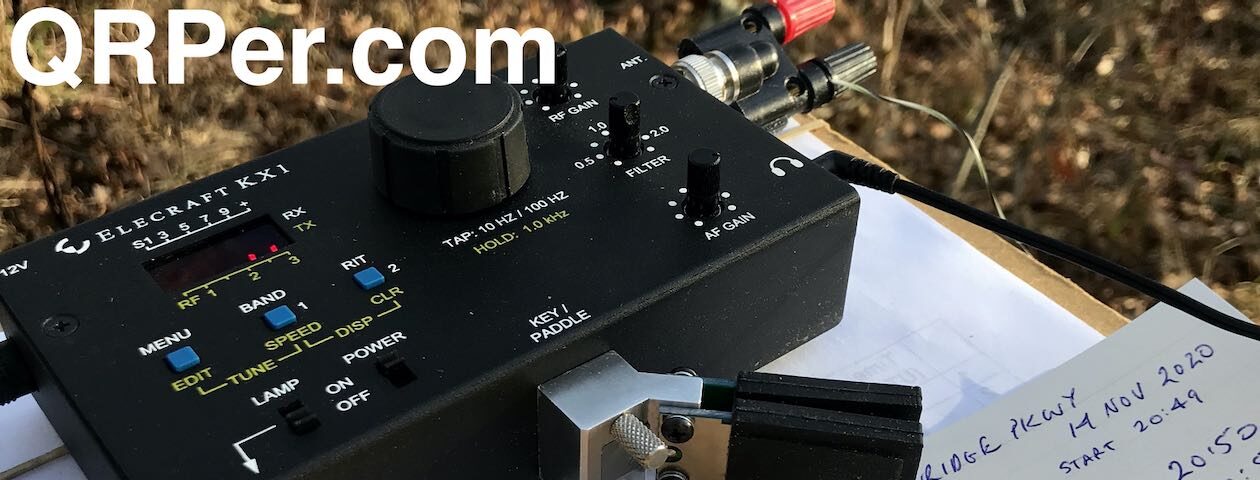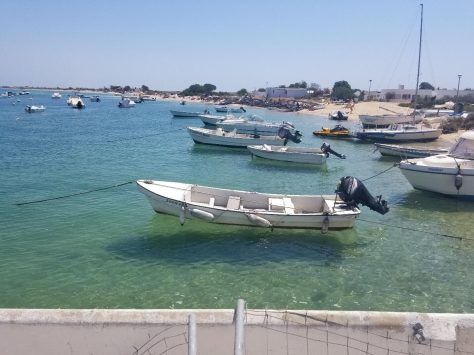When our family needs a change of scenery without a long drive, Mount Mitchell State Park is our go-to destination. I’ve mentioned before that it’s my “happy place” here in North Carolina. Mount Mitchell is only about 6 miles from our home as the crow flies, but it takes about 50 minutes to drive there, and it’s not in the direction of any of our usual destinations. Heading up the Blue Ridge Parkway and watching the flora change with elevation makes it feel like a proper getaway.
On Sunday, June 16, 2024, we wanted just such a getaway, as my wife and daughters were treating me to some Father’s Day fun. After visiting my father-in-law in the hospital in the early afternoon, we drove to Mount Mitchell.
Mount Mitchell State Park (US-2747)
 Sundays on Mount Mitchell tend to be busy, especially in the summer. However, on this particular Sunday, it was rainy, foggy, and there were storms in and around the area.
Sundays on Mount Mitchell tend to be busy, especially in the summer. However, on this particular Sunday, it was rainy, foggy, and there were storms in and around the area.
Weather like this never bothers us on Mount Mitchell, as it can shift in an instant, as long as thunderstorms don’t intrude.
 As soon as we arrived, I grabbed my radio bag from the car and found an empty picnic shelter. I’d been hoping for a free shelter since it was raining, and fortunately, we got our pick!
As soon as we arrived, I grabbed my radio bag from the car and found an empty picnic shelter. I’d been hoping for a free shelter since it was raining, and fortunately, we got our pick!
 One of the first things I did after dropping off my pack was to tie Hazel to a picnic table because she was laser-focused on a chipmunk she saw run up a tree next to the shelter. That dog drives chipmunks and squirrels crazy, I’m sure.
One of the first things I did after dropping off my pack was to tie Hazel to a picnic table because she was laser-focused on a chipmunk she saw run up a tree next to the shelter. That dog drives chipmunks and squirrels crazy, I’m sure.
 My wife and daughters dropped off some art supplies at one of the shelter tables, then went on a short hike while I performed my POTA activation.
My wife and daughters dropped off some art supplies at one of the shelter tables, then went on a short hike while I performed my POTA activation.
 Note that Mount Mitchell is also a SOTA summit, but the picnic area is not within the activation zone. I could have easily gone to one of my go-to SOTA spots on the summit and knocked out a SOTA activation quickly (only four contacts are needed), but I wanted to save that for another day. Plus, being in the shelter meant that I could have a nice leisurely, dry activation!
Note that Mount Mitchell is also a SOTA summit, but the picnic area is not within the activation zone. I could have easily gone to one of my go-to SOTA spots on the summit and knocked out a SOTA activation quickly (only four contacts are needed), but I wanted to save that for another day. Plus, being in the shelter meant that I could have a nice leisurely, dry activation!
I brought along my Penntek TR-45L and planned to pair it with a random wire antenna for the activation. However, since the weather was iffy—again, my primary concern was any thunderstorms that might sneak up on us—I decided to skip the wire antenna and go tabletop instead.
Fortunately, my Elecraft KH1 lives in my EDC bag at all times, so I set it up for tabletop mode.
New Tufteln KH1 Right Angle Adapter
 KH1 “tabletop mode” gave me the perfect excuse to try out an accessory my friend Joshua (N5FY) sent me: his version of a KH1 right-angle antenna adapter.
KH1 “tabletop mode” gave me the perfect excuse to try out an accessory my friend Joshua (N5FY) sent me: his version of a KH1 right-angle antenna adapter.
You might recall that I have used the Elecraft KH1 adapter in previous activations and I think it works brilliantly. The first version of Elecraft’s adapter had one issue: the parts would fall apart if you weren’t careful with how you attached it to the KH1.
 Joshua designed his right-angle adapter with captive components so that it’s all in one piece and can’t come apart.
Joshua designed his right-angle adapter with captive components so that it’s all in one piece and can’t come apart.
I should note here that Elecraft actually updated their right-angle adapter design so that it also has captive components as well—so you have two choices! I’ll use the new Elecraft adapter in a future video and field report.
Joshua’s Tufteln design works really well (it’s also less expensive than the OEM adapter), and I like that it’s bright red, which means I’m less likely to leave it in the field!
Gear:
 Note: All Amazon, CW Morse, ABR, Chelegance, eBay, and Radioddity links are affiliate links that support QRPer.com at no cost to you.
Note: All Amazon, CW Morse, ABR, Chelegance, eBay, and Radioddity links are affiliate links that support QRPer.com at no cost to you.
- Elecraft KH1 Edgewood Package
- Tufteln KH1 Right Angle Adapter
- Pelican Micro M40
- K6ARK 3-D Printed Paddle
- Key cable: Cable Matters 2-Pack Gold-Plated Retractable Aux Cable – 2.5 Feet
- Anker Soundcore Mini Speaker
- GraphGear 0.9mm 1000 Automatic Drafting Pencil
- Rite In The Rain Top Spiral Notebook
- Camera: DJI OSMO 4 action camera with Joby Telepod Sport Tripod
- Nemo Chipper Foam Seat
On The Air
 I assumed that 20 meters might be the most productive band that afternoon, so that’s where I started calling CQ POTA after snagging a Park-to-Park with K9NUD. Continue reading Tabletop QRP POTA: A Father’s Day Getaway to Mount Mitchell State Park
I assumed that 20 meters might be the most productive band that afternoon, so that’s where I started calling CQ POTA after snagging a Park-to-Park with K9NUD. Continue reading Tabletop QRP POTA: A Father’s Day Getaway to Mount Mitchell State Park


























 Around these parts, good quality pre-owned consumer grade DSLRs are easily available. I purchased this as much for still photography as for ability in shooting high-quality video
Around these parts, good quality pre-owned consumer grade DSLRs are easily available. I purchased this as much for still photography as for ability in shooting high-quality video 







































